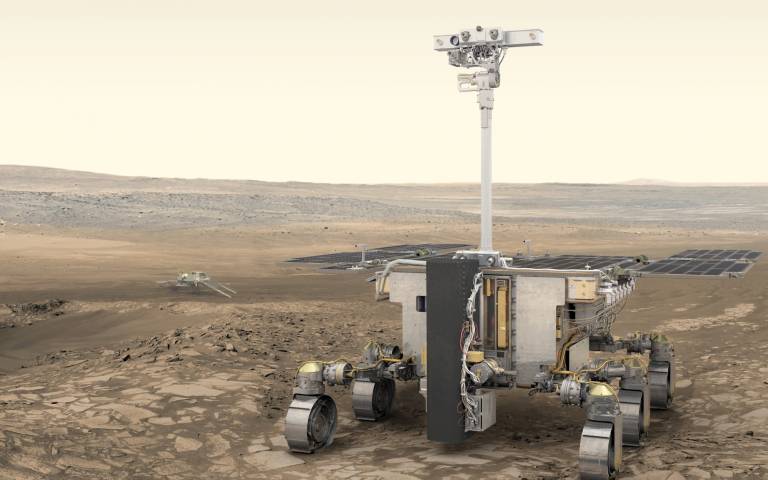UCL to form closer ties with the European Space Agency
23 September 2019
A memorandum of collaboration agreed by UCL and the European Space Agency (ESA) is one of the most comprehensive to date between ESA and a university and builds on existing close co-operation on missions to study space weather and other phenomena in space.

The memorandum, signed by Jan Woerner, Director General of ESA, and David Price, UCL Vice-Provost (Research), covers a swathe of topics ranging from planetary science to space policy, governance and security.
The partnership will help to inspire young people to study science, technology, engineering and maths, and deliver job opportunities in a high-growth industry. It aims to maximise the expert support that ESA provides for space-related research programmes at UCL, working together to improve lives and communities.
The agreement represents one of the most comprehensive collaborations established to date between ESA and a university. It establishes ESA_Lab@UCL as the ninth such collaboration in Europe and the second in the UK.
The memorandum of collaboration signed by the two organisations is unique in its breadth, covering 16 themes. These include: materials science; space project management and systems engineering; satellite communications; space law and regulation; space medicine; orbital dynamics and space safety; and off-world living.
ESA and UCL have a long history of close co-operation, with UCL contributing to ESA’s planetary and exoplanetary missions such as Giotto, Mars Express, Venus Explorer and Rosetta, as well as Earth observation missions such as Cryosat and Sentinel-3.
The Sentinel-3 satellite programme has enabled scientists to gather new data on how sea ice thickness is changing, and address data gaps vital to monitoring polar regions and climate change.
UCL’s Department of Space and Climate Science at the Mullard Space Science Laboratory has also contributed to payloads flown on ESA missions to study space weather and other phenomena.
Currently UCL provides scientific leadership for three new ESA missions: the ARIEL (Atmospheric Remote-sensing Infrared Exoplanet Large-Survey) mission to explore the atmospheres of 1,000 exoplanets to analyse how planetary systems form and evolve; the SMILE (Solar Wind Magnetosphere Ionosphere Link Explorer) mission to study space weather that could threaten the technological infrastructure of Earth; and the Comet Interceptor mission to make the first study of a comet from the far reaches of the solar system.
Professor David Price, Vice-Provost (Research) at UCL, said: “This is a very exciting development for space research at UCL, which will enable us to expand our understanding of our planetary system and stimulate world-changing discoveries. I hope that in partnership with ESA, we will forge new collaborations and generate new insight for many years to come.”
Jan Woerner, Director General of ESA, said: “ESA is strongly committed to being an integral part in the management of the climate crisis.
“We see this collaboration with UCL as an opportunity to gain new insight from the young people of Europe, not only in terms of science and technology but also in terms of policy and governance. UCL has an incredible legacy of excellence and we are excited about the opportunities for sharing and shaping a vision for our common future in space.”
Links
- Office of the UCL Vice-Provost (Research)
- UCL Mullard Space Science Laboratory
- UCL Space & Climate Physics
- UCL Mathematical & Physical Sciences
- European Space Agency
Source
Image
Artist’s impression of ESA’s ExoMars rover (foreground) and Russia’s science platform (background) on Mars. The PanCam, or “eyes” of the rover, is placed at the top of the mast and was developed by a dedicated team of scientists and engineers at the UCL Mullard Space Science Laboratory. Credit: ESA/ATG medialab
 Close
Close

